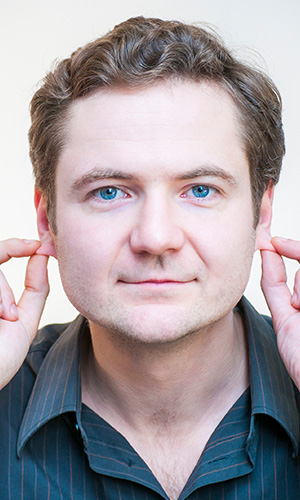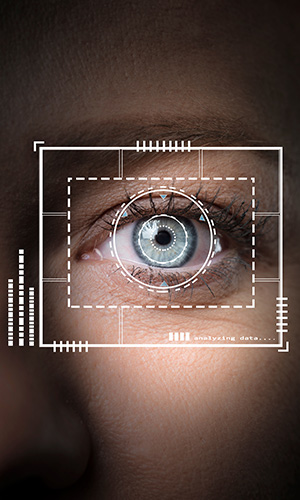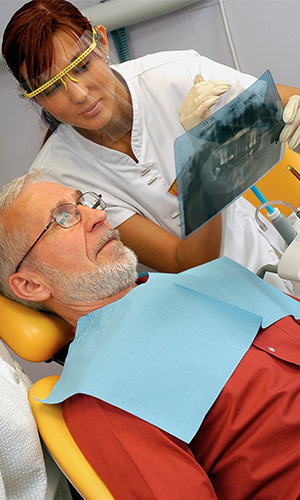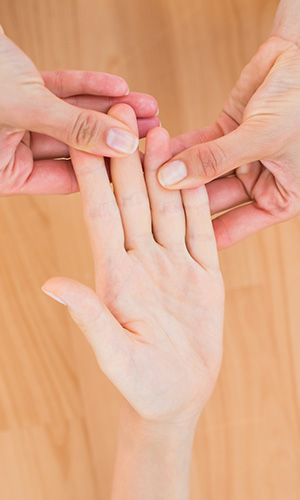Get Easy Health Digest™ in your inbox and don’t miss a thing when you subscribe today. Plus, get the free bonus report, Mother Nature’s Tips, Tricks and Remedies for Cholesterol, Blood Pressure & Blood Sugar as my way of saying welcome to the community!
6 odd signs of heart disease

We’re conditioned to think of certain signs when it comes to heart disease…
Things like high blood pressure, elevated cholesterol and even shortness of breath…
And things that are going on inside our bodies as a result of changes in the health of our heart and blood vessels.
But, did you know that there are outward signs too?
Signs that show up in your eyes and mouth, on your fingers and on your earlobes, that can warn you of cardiac problems to come.
It sounds weird but it’s true.
Here are the six signs you should look for…

#1 Earlobe crease
The first is known as Frank’s sign and is actually an external crease on your earlobe. It’s called Frank’s sign because it was first discovered by Dr. Sanders Frank and studies have linked it with a higher risk of atherosclerosis (a build-up of plaque in your arteries that put you in danger of heart attack).
Before you think, “Yeah, right… how could a crease in my earlobe have anything to do with my heart?” you should know that when I say that studies have linked the sign to atherosclerosis, I mean that over 40 studies have proven the association.
Yes, that’s right…
Over 40 scientific studies show that if you have a crease in your earlobe, you are at risk.
And, guess what, those earlobe creases have now even been linked to cerebrovascular diseases (that’s diseases of the blood vessels in your brain).
Read: Not a veggie fan? Eat just this ONE for clear arteries

#2 Grey halo around the iris
Now that you know what to look for on your earlobe to check your risk of heart disease, let’s move to your eyes where there is one sign you must know – a grey halo around your iris.
You see, your iris is the colored part of your eye – what gives you those gorgeous blue, brown, green or hazel peepers.
What you want to look for is whether or not you have what’s known as a corneal arcus – a grey that circles (or partially circles) the colored part.
If you do, it’s a sign of fatty build-up (think cholesterol, lipids, and triglycerides) and has been associated with some of the risk factors for heart disease including high cholesterol and an increase of the bad cholesterol (the LDL) in your body as well as high blood pressure.
Read: 6 ways to manage cholesterol without drugs or disease risk

#3 Yellow, fatty bumps
Now, let’s move to your skin which can also give you clues to whether you’re at risk for heart disease. Here what you’re looking for is a sign called a xanthoma – yellow, fatty bumps on your buttocks, eyelids, knees or elbows.
These happen when your cholesterol level is so high that your body even deposits that fat in your skin. But as you can guess, these cholesterol deposits also go to the arteries that supply your heart too.
Read: 4 teas that naturally balance cholesterol

#4 Tooth loss and gum disease
On top of the signs we’ve talked about on your earlobes and skin and in your eyes, an increased risk of heart disease can also be discovered from signs related to your dental health.
That’s because bad bacteria can actually enter your bloodstream through your gums, leading to inflammation that damages your blood vessels and contributes to heart disease.
That’s probably why multiple studies have demonstrated a link between gum disease and tooth loss and atherosclerosis.

#5 Blue lips
While we’re talking about your mouth and your risk for heart disease, we should also mention the color of your lips. You see, your lips should be a healthy red or pink but in some people with heart disease, they can take on a blue tint.
The reason for this is because cardiac problems can result in less oxygen being delivered to your tissues and oxygen is what gives the red color to your blood.
Read: The root juice that boosts the weakest hearts

#6 Clubbed fingers
And finally, let’s move to your hands which can also show signs of imminent heart problems known as digital clubbing or clubbed fingers. This is where the end of your fingers and your fingernails get thicker and wider.
It’s due to the same thing that causes those blue lips – a lack of oxygen to your tissues. If you see this sign, you should definitely talk to your doctor as heart and lung diseases are the most likely causes.
There you have it… the six signs of heart disease that show up in your eyes, mouth, skin, and fingers. Be sure to check yourself and your loved ones today so that you can take steps to prevent worsening heart problems down the road.
Editor’s note: There are perfectly safe and natural ways to decrease your risk of blood clots including the 25-cent vitamin, the nutrient that acts as a natural blood thinner and the powerful herb that helps clear plaque. To discover these and other secrets of long-lived hearts, click here for Hushed Up Natural Heart Cures and Common Misconceptions of Popular Heart Treatments!
Sources:
- Diagonal ear lobe crease and atherosclerosis: A review of the medical literature and dental implications — Medicina Oral, Patologia Oral Y Cirugia Bucal
- Diagonal Earlobe Crease is a Visible Sign for Cerebral Small Vessel Disease and Amyloid-β. — Scientific Reports
- Significance of corneal arcus — Journal of Pharmacy and Bioallied Science
- Association between corneal arcus and some of the risk factors for coronary artery disease — British Journal of Ophthalmology
- ‘Tendon xanthomas’ as an indicator of premature coronary artery disease — Oxford Medical Case Reports
- “Gum Bug, Leave My Heart Alone!”—Epidemiologic and Mechanistic Evidence Linking Periodontal Infections and Atherosclerosis — Journal of Dental Research
- Is poor oral health a risk marker for incident cardiovascular disease hospitalisation and all-cause mortality? Findings from 172 630 participants from the prospective 45 and Up Study — BMJ Open
- Periodontitis is an independent risk indicator for atherosclerotic cardiovascular diseases among 60 174 participants in a large dental school in the Netherlands — Journal of Epidemiology and Community Health
- Digital clubbing and hyperthrophic osteorthropathy: The underlying mechanisms — British Journal of Diseases of the Chest
- Assessment of clubbing — BMJ Best Practice
You might also enjoy…
I gave up ONE food and my high BP vanished
I still remember the last visit with the doctor I saw for my blood pressure problems. She took my blood pressure and then matter-of-factly told me: “I guess your high blood pressure is gone.” And I was taking exactly zero medication. She didn’t know why, but I did. I had given up… Continue reading…
















